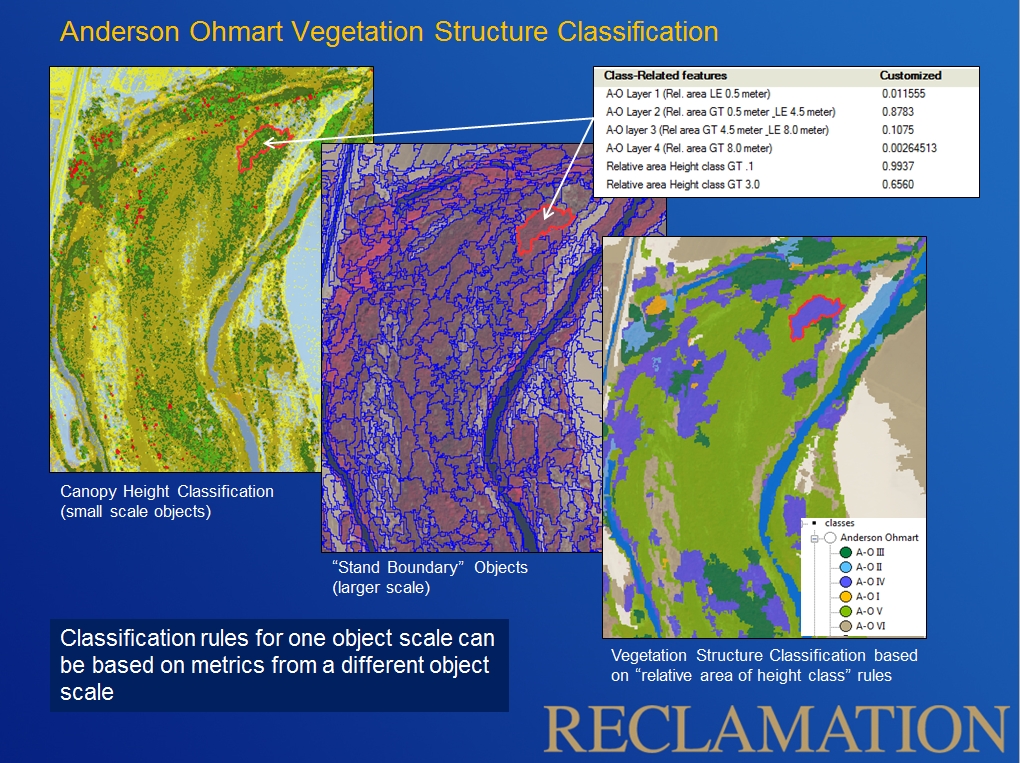In 2012, the U.S. and Mexico signed the historic Minute 319 Agreement to improve binational water management of the Colorado River system. The agreement allowed for a one-time “pulse flow” release of 105,392 acre-feet (130 million cubic meters) of water from the Morelos Dam on the U.S. (Arizona)-Mexico border in March of 2014 to restore the dry downstream stretch of the Colorado River Delta. Bureau of Reclamation scientists are tracking the immediate and long-term effects of the flood pulse on the delta ecosystem. Pre-pulse baseline vegetation information is derived from WorldView-2 satellite imagery and lidar data; Landsat and Moderate Resolution Imaging Spectroradiometer (MODIS) data will be used for analyses of the post-pulse biologic and hydrologic effects. Scientific investigations continue in 2015.
http://www.usbr.gov/lc/region/feature/minute319.html

Example of pre-pulse baseline vegetation mapping: Anderson Ohmart Vegetation Structure Classification using Object Based Image Analysis with a lidar-derived canopy height classification, WorldView-2 multispectral imagery, multiple object scales, and modeling rules. North is oriented toward the top of the images.

